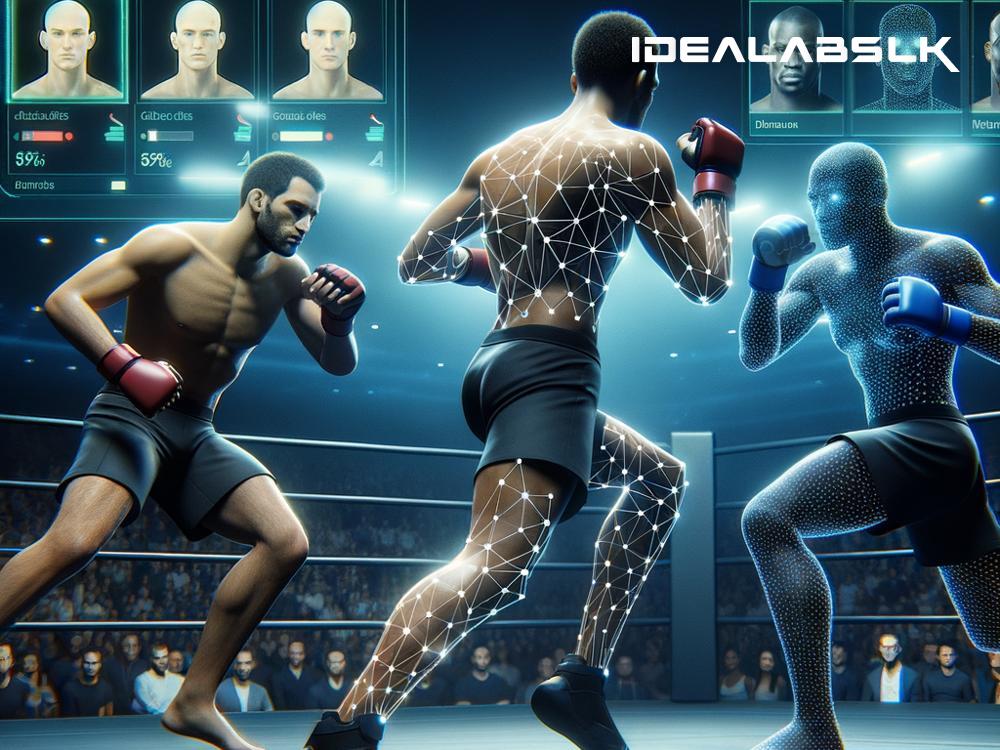How AI Identifies Fighter Strengths and Weaknesses Mid-Fight
In the world of combat sports like boxing or mixed martial arts (MMA), understanding your opponent's strengths and weaknesses can be the key to victory. Traditionally, this has been the job of the coach, who watches and advises the fighter based on experience and keen observation. However, the landscape is changing with the introduction of Artificial Intelligence (AI) into the ring. Let's explore how AI is revolutionizing the way fighter strengths and weaknesses are identified mid-fight, making combat sports not just a test of physical prowess but also a chess match of technological assistance.
The AI Cornerman
Imagine having a cornerman who never misses a detail, remembers every fight ever recorded, and learns continuously. That's what AI can offer. Through the use of advanced algorithms and machine learning, AI systems analyze vast amounts of data from previous fights, including movements, punch speed, combinations, and defensive tactics. By understanding what has been effective or unsuccessful across thousands of bouts, AI can provide insights that might be missed by the human eye.
Real-Time Analysis
One of the most groundbreaking aspects of AI in fighting is its ability to perform real-time analysis during the fight. Cameras and sensors placed around the ring or octagon capture the action, feeding live data into the AI system. It can track the velocity of punches, the amount of force absorbed by a fighter, movement patterns, and even predict the fighter's fatigue levels.
This real-time data allows the AI to identify patterns or changes in the fighter's performance. For example, if a boxer starts dropping their left hand slightly, the AI can catch this subtle shift and alert the coaching team that their fighter might be open to a right hook. This level of detail can be the difference between dodging a knockout punch and being on the receiving end of one.
Strengths and Weakness Identification
AI doesn't just track physical actions; it also analyzes strategies. It observes how fighters respond to various situations, like being cornered or facing a flurry of punches. By doing so, it can identify a fighter's instinctual strengths — perhaps a natural ability to counterattack or an exceptional skill at maintaining distance.
On the flip side, AI is equally adept at spotting weaknesses or habits that could be exploited, such as a consistent delay in response after a feint or a tendency to lean too far forward when throwing a jab. By comprehending these nuanced behaviors, the AI can suggest adjustments or strategies to exploit the opponent's vulnerabilities while reinforcing the fighter's strengths.
Beyond the Fight
The application of AI in identifying fighter strengths and weaknesses isn't confined to the duration of the match. Post-fight analysis provides a treasure trove of insights. Fighters and coaches can review the AI’s findings to understand what worked, what didn’t, and why. This continuous feedback loop allows fighters to adapt and evolve, tailoring their training to address specific areas identified by the AI.
Moreover, the AI's learning isn't just beneficial for the fighters it analyzes directly. The cumulative data and analysis can contribute to a broader understanding of combat sports, potentially identifying trends, predicting outcomes, and even guiding the future of fight training and strategy.
Challenges and Considerations
While the benefits of AI in combat sports are profound, there are challenges and ethical considerations to navigate. The accuracy of AI predictions and analyses relies heavily on the quality and breadth of the data it's trained on. Biases in this data can lead to flawed conclusions.
Furthermore, there's the question of fairness — should all fighters have access to AI assistance to ensure a level playing field? And what about the art of fighting? Some argue that relying too heavily on technology could diminish the human elements of strategy, spontaneity, and even the fighter's heart.
Conclusion
As technology continues to advance, AI's role in identifying fighter strengths and weaknesses mid-fight is set to grow. This fusion of human skill and artificial intelligence opens up exciting possibilities for combat sports, making each fight not just a physical battle but a showcase of cutting-edge technology. However, as we navigate this new era, it's crucial to balance technological advancement with the integrity and spirit of the sport. In the end, it's the combination of human will, strategy, and AI insights that will create the champions of tomorrow.

